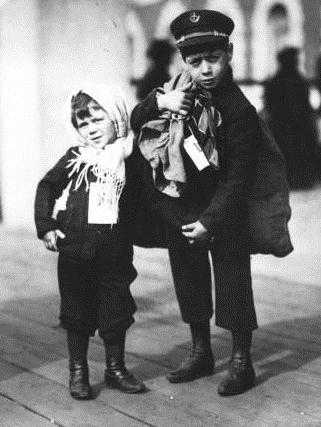Sharing Metadata Expertise With DPLA
Metadata expertise from Europeana and The European Library is now being used by the American library community.
On 8 February, the Digital Public Library of America released a new version of its Metadata Application Profile (MAP), to be used in the coming April 2013 DPLA public release. The DPLA drew on advice and feedback from Robina Clayphan (Interoperability Manager for The European Library and Europeana) and Antoine Isaac (Scientific Coordinator for Europeana) to create its latest set of metadata documentation.
In its announcement, the DPLA says, 'This new version is designed to build on the experience of the Europeana Data Model (EDM). In addition, it incorporates feedback from the DPLA community and digital hub pilot participants to create a balanced framework that allows us to accommodate existing and emerging data models for library, archive, and museum resources.'

Image from the first DPLA/Europeana joint exhibition 'Leaving Europe: A New Life in America'. 'Emigrants [sur Ellis Island], deux gosses d'Italie', Bibliothèque nationale de France, public domain
Technical interoperability between the DPLA and Europeana has been defined as a crucial goal for the two initiatives (read 'DPLA and Europeana announce collaboration' press release). By directly re-using a number of elements from EDM, the DPLA MAP makes a big step towards easing data interchange between both networks and lowering the barrier for data consumers who will want to plug into both platforms at the same time.
When the collaboration between Europeana and the DPLA was announced in October 2011, Robert Darnton, a DPLA Steering Committee member and University Librarian at Harvard, said, 'The association between the DPLA and Europeana means that users everywhere will eventually have access to the combined riches of the two systems at a single click. The aggregated databases will include many millions of books, pamphlets, newspapers, manuscripts, images, recordings, videos, and other materials in many formats.'
Jill Cousins, Executive Director of Europeana, welcomed the agreement, saying that 'Europeana was designed to be open and interoperable, and to be able to collaborate with the DPLA is a validation of that aim. By this combined effort on two continents, Europeana and the DPLA hope to promote the creation of a global network with partners from around the world.'
The recent work on the DPLA's MAP provides the opportunity to widen collaboration channels between the two initiatives. In recent months, Europeana Foundations's Robina Clayphan and Antoine Isaac have been providing feedback to the DPLA metadata team (Jeffrey Licht, Jenn Riley, Amy Rudersdorf and Richard J. Urban), helping them to make the most of the metadata modelling expertise gathered in the Europeana Network. This is a great acknowledgement of the work carried out over the past few years by the entire Europeana family, including projects such as Europeana Version 1.0, Europeana Connect, Europeana Libraries, Musical Instrument Museums Online (MIMO), CARARE, Heritage of the People's Europe (HOPE) and APEnet.
The DPLA and Europeana have also collaborated on a virtual exhibition, exploring the stories of Europeans migrating to the US. Visit the 'Leaving Europe: A New Life in America' exhibition.
